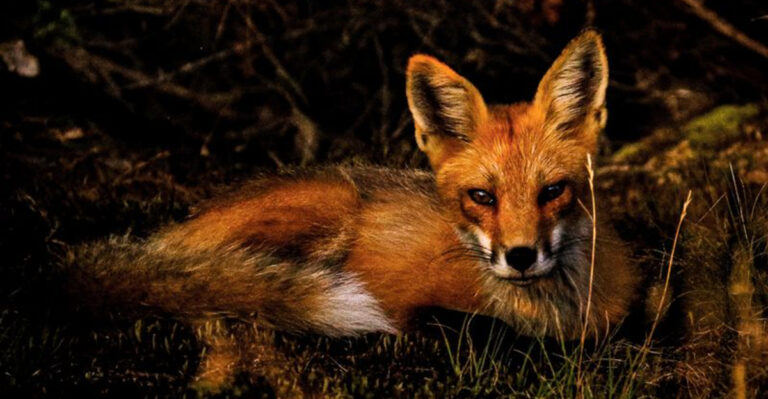Scientists Spent 16 Months Exploring The Ocean – Here Are The Stunning Species They Discovered
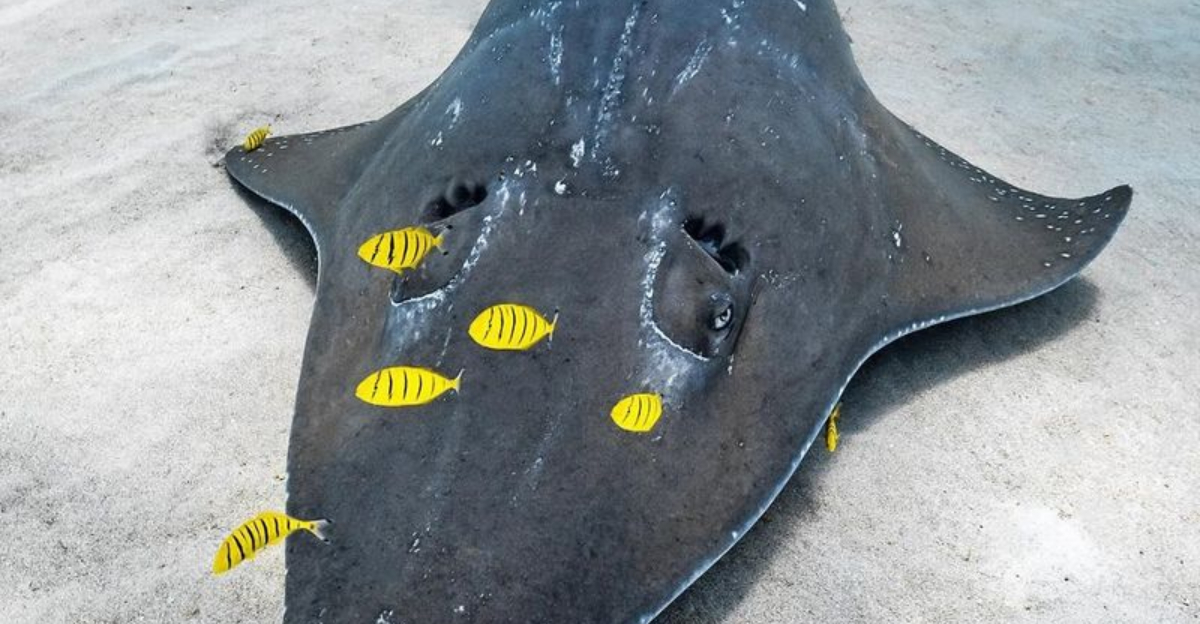
The ocean remains Earth’s final frontier, with most of its depths still unexplored. A team of marine biologists recently completed a 16-month expedition across various ocean regions, uncovering remarkable creatures hidden beneath the waves.
Their discoveries highlight just how much remains unknown in our planet’s vast underwater realm, offering glimpses into extraordinary adaptations and evolutionary marvels.
1. Pressure-Defying Deep-Sea Limpets
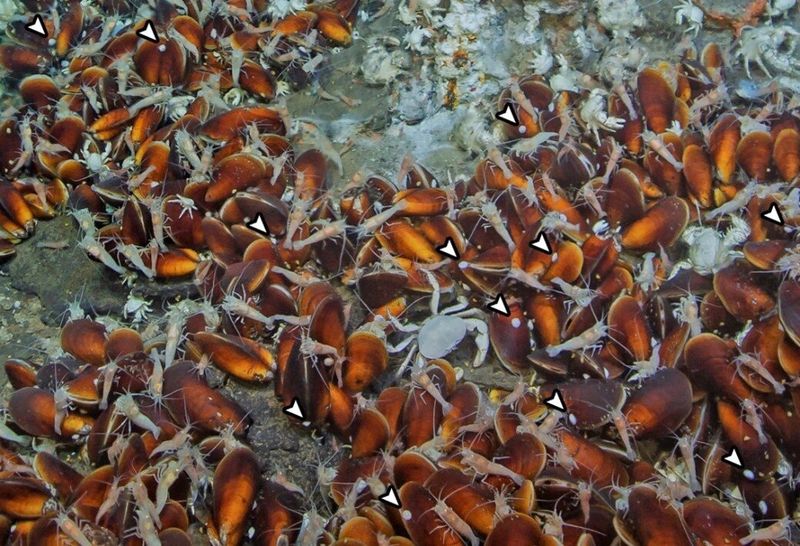
At crushing depths of 7,000 meters, researchers encountered remarkable limpets with shells stronger than any human-made material. These cap-shaped mollusks have evolved extraordinary pressure resistance.
What fascinated scientists most was their feeding mechanism – specialized radulas that can scrape bacterial films from rocks where no light penetrates. Some specimens collected showed evidence of living more than 30 years in complete darkness!
2. Master Mimics: Pygmy Pipehorses
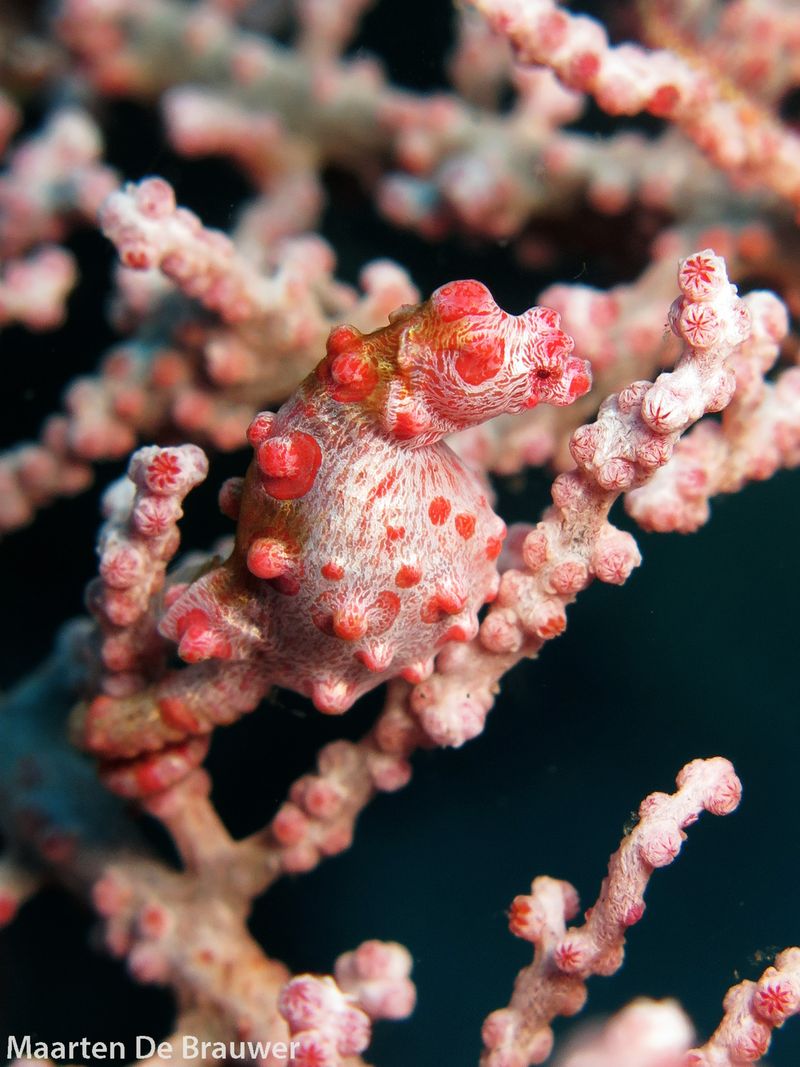
No bigger than your pinky finger, these seahorse cousins amazed researchers with unparalleled camouflage abilities. The expedition documented three new pygmy pipehorse species, each mimicking different seaweed types with astonishing precision.
Their elongated bodies change color within minutes to match surroundings. Most remarkable was one specimen that could even imitate the movement patterns of the algae it resembled, swaying identically with ocean currents.
3. Butterfly Ballerinas Of The Deep
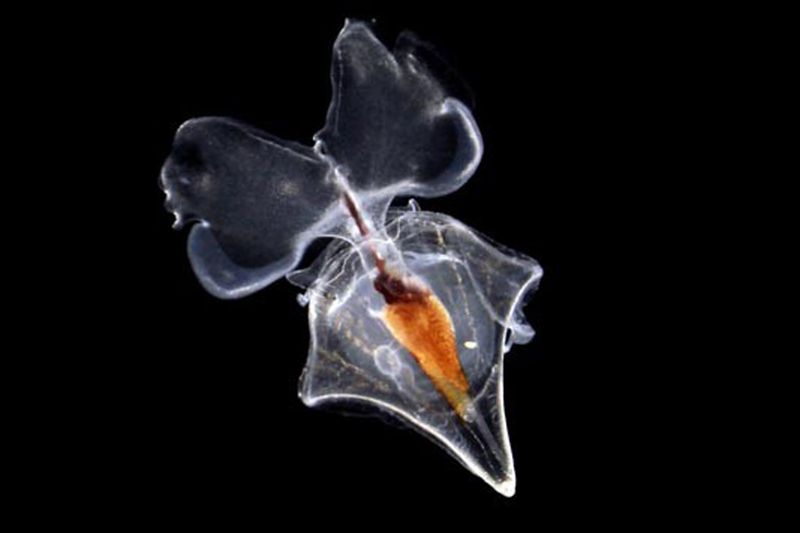
Sea butterflies captivated the expedition team with their ballet-like movements through ocean currents. These transparent pelagic snails, no larger than a grain of rice, propel themselves by flapping modified foot lobes that truly resemble butterfly wings.
Scientists identified four previously unknown species with shells so delicate they’re practically transparent. The team’s submersible cameras captured them performing synchronized swimming patterns at depths where sunlight barely penetrates.
4. Microscopic Mud Dragons

Among the expedition’s tiniest discoveries were bizarre creatures nicknamed “mud dragons.” These microscopic invertebrates, scientifically known as Kinorhyncha, inhabit seafloor sediment with armored bodies divided into distinct segments.
Despite their fierce appearance under the microscope, they’re smaller than a period on this page! The team identified seven new species, including one with retractable spines that can triple its body length when threatened – a previously unknown defense mechanism.
5. Rainbow-Clawed Squat Lobsters
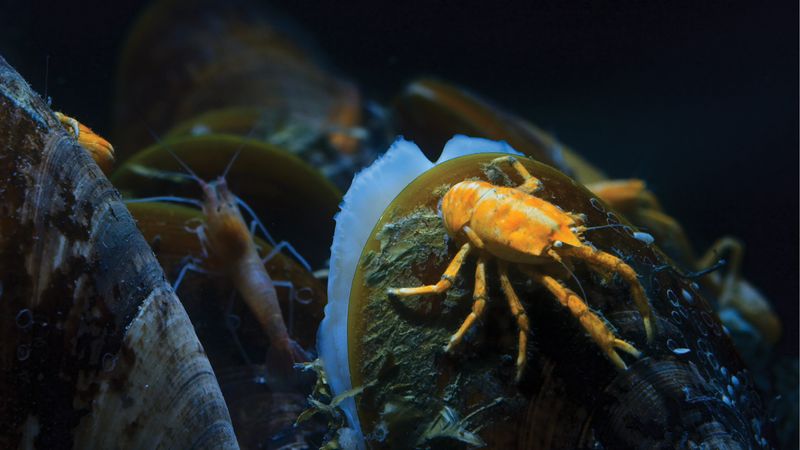
Lurking around hydrothermal vents, scientists encountered squat lobsters with claws that would make a painter jealous. Their exoskeletons display a psychedelic array of colors – from electric blues to fiery oranges – that glow under specialized lights.
These crustaceans aren’t true lobsters but distant relatives. The expedition team documented how they use their extraordinarily long claws to snatch particles from water columns. One species even harbors symbiotic bacteria that digest toxic minerals from the vents!
6. Living Bamboo Beneath The Waves
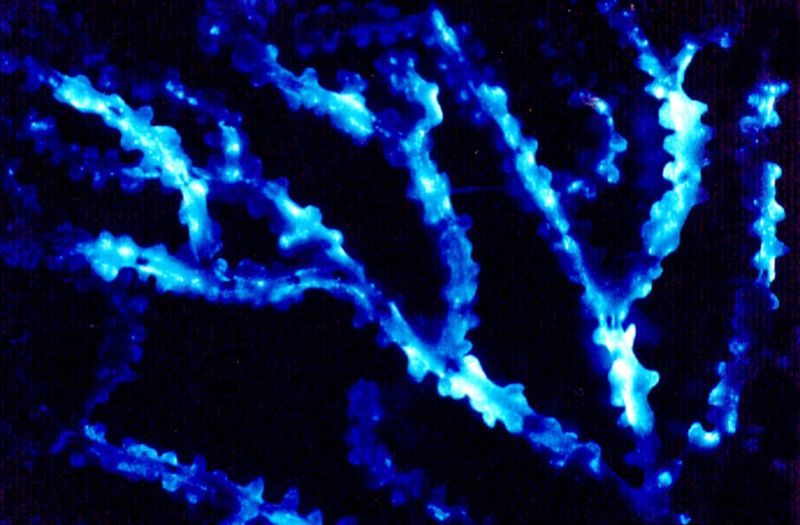
Rising like underwater forests, newly discovered bamboo corals left researchers awestruck. Growing in perfect segmented patterns resembling their plant namesakes, these deep-sea corals thrive where sunlight never reaches.
The expedition recorded colonies standing over 10 feet tall, with growth rings suggesting some specimens might be over 200 years old! Most fascinating was their bioluminescent capabilities – when disturbed, they emit pulses of blue-green light that travel up their jointed skeletons like electric signals.
7. Indestructible Ocean Water Bears
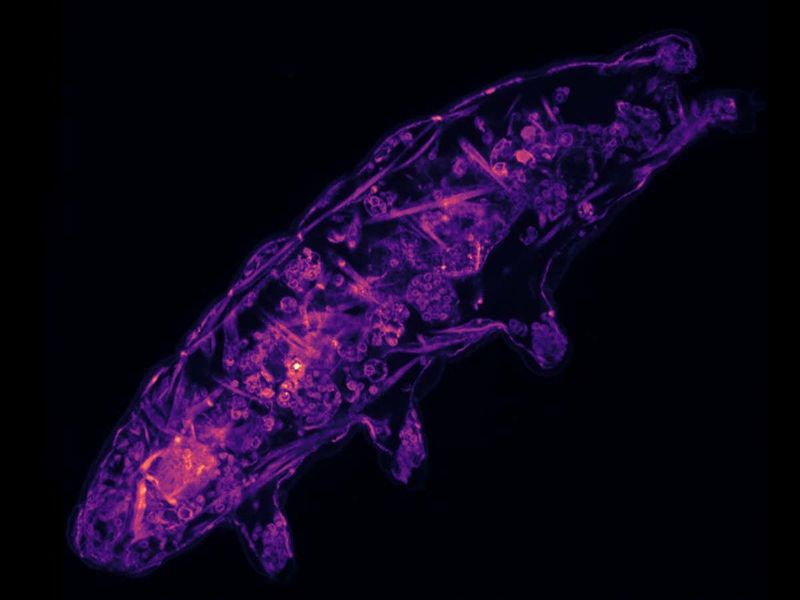
Tardigrades – microscopic “water bears” famous for surviving extreme conditions – revealed surprising adaptations in marine environments. The expedition team found specialized deep-sea tardigrades that thrive under pressures that would crush submarines.
Unlike their terrestrial cousins, these marine versions possess modified tube-like appendages for anchoring to seafloor sediments. Laboratory tests showed they can survive without oxygen for months by entering suspended animation states, making them among Earth’s most resilient creatures.
8. Spindly Giants Patrolling The Abyss
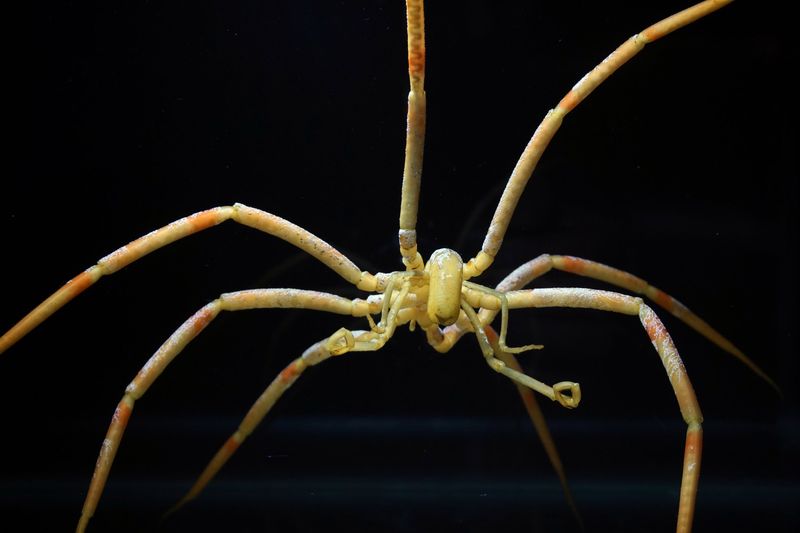
Sea spiders the size of dinner plates patrol abyssal plains with eerie grace. These aren’t true spiders but marine arthropods called pycnogonids, and the newly discovered deep-dwelling species boast legs spanning up to 30 inches!
Unlike surface-dwelling relatives, these giants have evolved transparent exoskeletons and extremely slow metabolisms. Most fascinating was the discovery that their digestive systems and reproductive organs extend into their legs due to their minuscule central bodies – a bizarre adaptation to deep-sea conditions.
9. Serpentine Stars Of The Twilight Zone

Brittle stars with arms that move like synchronized dancers were discovered in the ocean’s “twilight zone” – depths where minimal light creates perpetual dusk. These starfish relatives possess five flexible arms that can regenerate if damaged.
The expedition documented previously unknown species that glow with bioluminescent patterns when threatened. Most remarkable was one specimen with arms nearly three feet long that could coil and uncoil with snake-like precision to capture passing prey or escape predators.
10. Neon-Spiked Living Pincushions
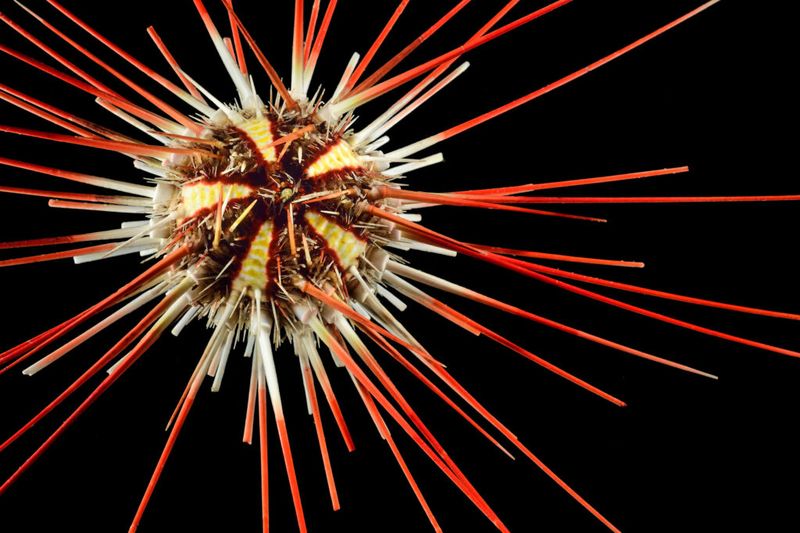
At abyssal depths, researchers encountered sea urchins that resemble living pincushions topped with glowing party decorations. These “cactus urchins” feature spines that illuminate with pulses of neon light, creating mesmerizing displays against the dark seafloor.
Unlike shallow-water relatives, these deep-dwellers have developed specialized feeding appendages that can extend up to five times their body length. Scientists were particularly fascinated by their ability to detect and capture food particles suspended in water rather than grazing on surfaces.
11. Volcanic Ridge-Dwelling Armored Crustaceans

Perched along underwater volcanic ridges, scientists found bizarre squat lobsters with exoskeletons resembling medieval armor. These creatures have developed specialized heat-resistant shells studded with spike-like protrusions that serve multiple purposes.
The spikes not only deter predators but also collect beneficial bacteria that help detoxify the mineral-rich waters surrounding hydrothermal vents. Most surprising was their communal behavior – forming protective circles around juvenile members when the expedition’s equipment approached.
12. Living Time Capsules: Millennium Corals

Resembling ancient twisted trees, deep-sea corals discovered by the expedition represent some of Earth’s oldest living organisms. Carbon dating revealed some specimens have been continuously growing for over 4,000 years – making them older than many human civilizations!
These slow-growing corals form complex structures that provide habitat for countless other species. Researchers were able to extract climate data from their growth rings, offering unprecedented insights into ocean conditions dating back millennia – a living record of Earth’s changing environment.
13. Transparent Phantoms With Glowing Hearts
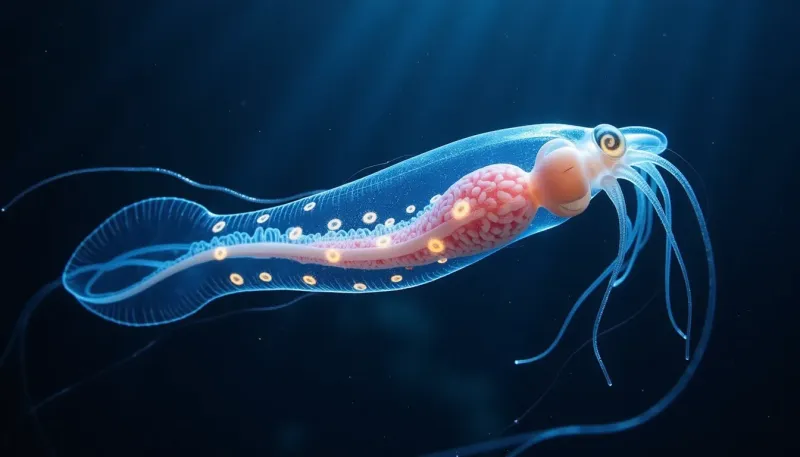
Glass squids captured during nighttime sampling revealed bodies so transparent they appear almost invisible except for their glowing internal organs. These ghostly cephalopods can control precisely which organs illuminate – creating complex light patterns for communication and camouflage.
Most remarkable was their defensive strategy – when threatened, they can detach glowing body parts that continue pulsing, distracting predators while they escape. Scientists also documented previously unknown color-changing abilities that work in conjunction with their transparency to make them virtually undetectable.
14. Guitar Sharks With Neon Markings
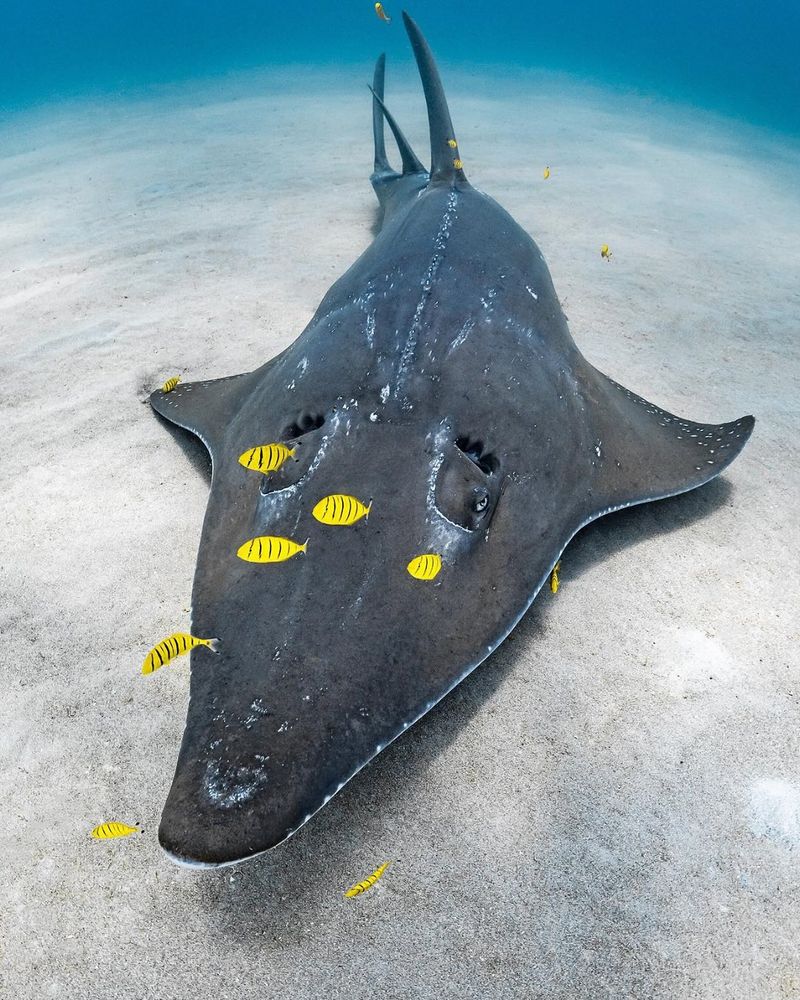
Imagine a shark that resembles a guitar! Scientists stumbled upon a previously undocumented guitarfish species featuring striking electric-blue patterns along its flat, elongated body.
Unlike common guitarfish, this species displays unique skeletal structures that allow for exceptional maneuverability in coral reef environments. Researchers believe these neon markings might play a role in mating rituals or territorial displays.
15. Living Chemistry Labs: Novel Sponge Forests
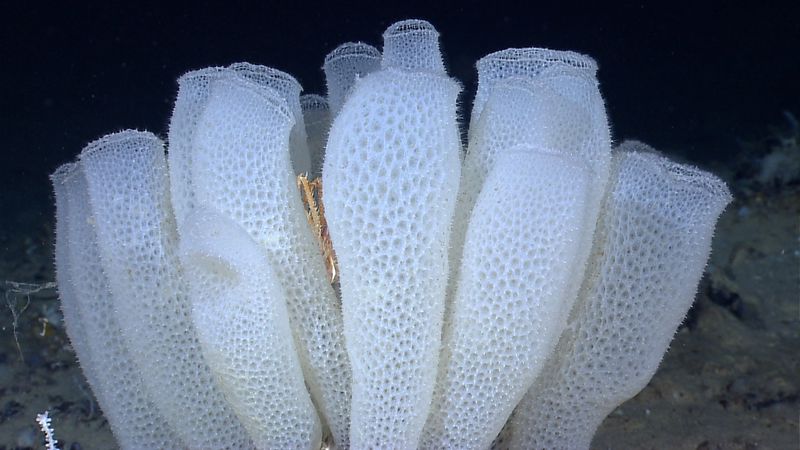
Entire forests of previously unknown sea sponges were discovered carpeting seamounts. Unlike typical sponges, these specimens display bizarre geometric shapes – from perfect spheres to hexagonal tubes – challenging our understanding of natural formation.
Scientists identified over 30 new species containing compounds with potential medical applications. Laboratory analysis revealed substances that show promise fighting antibiotic-resistant bacteria and certain cancer cells. Most fascinating was one sponge species that harbors five different symbiotic organisms, each producing unique bioactive compounds.






